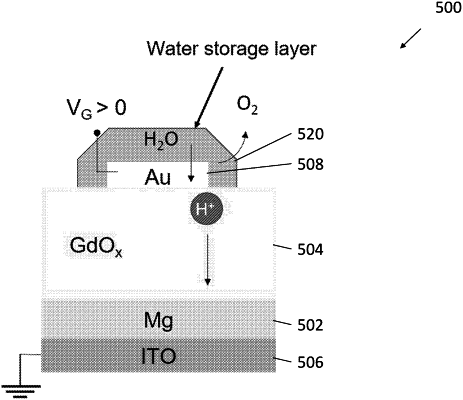| CPC G03F 7/70291 (2013.01) | 18 Claims |

|
1. A reconfigurable mask comprising:
a first electrode;
a second electrode;
a third electrode;
a hydrogen loading layer, disposed between the first electrode and the second electrode and between the first electrode and the third electrode, comprising:
a first hydrogen loading region, disposed between the first electrode and the second electrode, having a first transmission, absorption, phase shift, and/or reflectivity that varies with a first concentration of hydrogen ions in the first hydrogen loading region; and
a second hydrogen loading region, disposed between the first electrode and the third electrode, having a second transmission, absorption, phase shift, and/or reflectivity that varies with a second concentration of hydrogen ions in the second hydrogen loading region;
a proton-conducting electrolyte, disposed between the first electrode and the second electrode and between the first electrode and the third electrode, comprising:
a first proton conducting region, disposed between the first electrode and the second electrode, defining a first interface in direct contact with the first electrode; and
a second proton conducting region, disposed between the first electrode and the third electrode, defining a second interface in direct contact with the first electrode;
a water storage layer, disposed on the first electrode, to store water, hydrate compounds, or hydroxide ions and to provide hydrogen ions to the hydrogen loading layer via electrochemical reactions of the water, hydrate compounds, or hydroxide ions at the first interface and the second interface; and
a capping layer, deposited on top of the water storage layer, to prevent or reduce dehydration of the water storage layer,
wherein the first electrode is porous or permeable to water, hydrogen, or hydrogen ions.
|